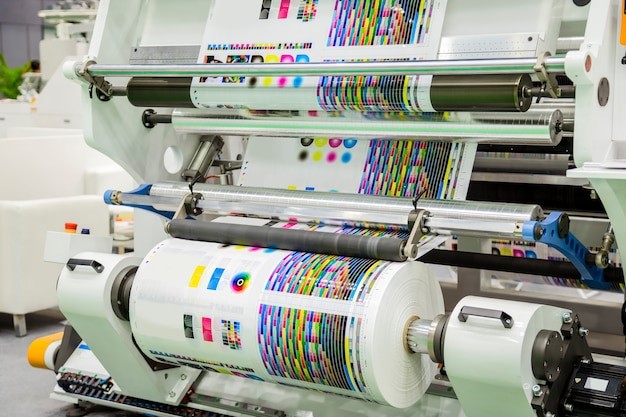
OFFSET PRINTING
The choice of ink and printing method plays a pivotal role in determining the quality, cost-effectiveness, and suitability of a print job. Three prominent methods that stand out are sheetfed printing, heatset printing, and coldset printing. Each method has its unique characteristics and applications, and the type of ink used further influences the final output. Let's take a closer look at these printing methods and the inks that drive them.
Sheetfed Printing: A Versatile Approach
Sheetfed printing is a widely used method for various printing applications, especially those with shorter print runs. In this process, individual sheets of paper are fed into the printing press one at a time. Sheetfed printing offers exceptional versatility, as it can handle a diverse range of paper stocks and sizes. It's the go-to choice for producing items like brochures, flyers, posters, and business cards.
Inks for Sheetfed Printing: Sheetfed presses can use two primary types of inks - conventional and UV inks. Conventional inks are oil-based and require drying time, while UV inks cure instantly when exposed to ultraviolet light. This curing process allows for faster production and is ideal for printing on non-absorbent materials like plastic or metal.
Heatset Printing: Glossy Magazines and Catalogs
Heatset printing is the preferred method for producing glossy magazines, catalogs, and high-volume publications. The defining feature of heatset printing is the use of heat to dry the ink rapidly. Large drying ovens are employed to achieve this, enabling high-speed production. The heatset process excels at producing sharp, vibrant images with a glossy finish.
Inks for Heatset Printing: Heatset inks are specially formulated to dry quickly with the application of heat. These inks often contain volatile solvents that evaporate during drying, leaving behind a crisp, glossy print. The result is stunning, high-quality publications that demand attention.
Coldset Printing: Newspapers and Beyond
Coldset printing is synonymous with newspapers and similar publications. Unlike sheetfed and heatset printing, coldset printing doesn't use heat to dry the ink. Instead, the ink dries naturally through absorption into the porous newsprint paper. This process is cost-effective and well-suited for high-volume printing.
Inks for Coldset Printing: Coldset inks are designed to dry slowly, allowing for absorption into the paper fibers. These inks contain oils that penetrate the paper, creating a more subdued finish compared to heatset or sheetfed printing. While the result may lack the glossy allure of other methods, it's perfectly suited for the newsprint medium and its intended audience.
Choosing the Right Method and Ink for Your Needs
When it comes to selecting the ideal printing method and ink for your project, several factors come into play. Consider the volume of your print job, the type of paper or substrate you plan to use, and the desired finish and quality. Each method and ink has its own strengths and limitations.
Moreover, the printing industry is continually evolving, with advancements such as eco-friendly inks and digital printing methods reshaping the landscape. Staying informed about the latest developments can help you make informed choices that align with your project goals.







